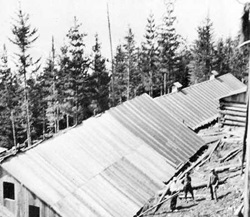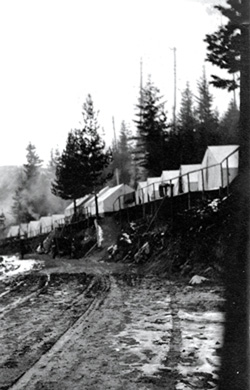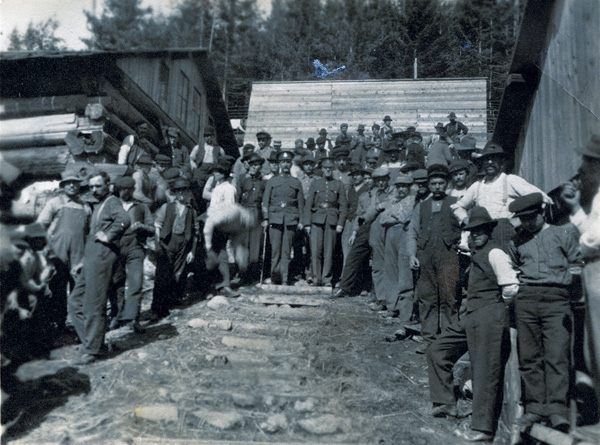Mount Revelstoke Internment Camp
Mount Revelstoke National Park
 Mount Revelstoke's internment camp stood from September to December, 1915
Mount Revelstoke's internment camp stood from September to December, 1915 © Revelstoke Museum and Archives.
 © Revelstoke Museum and Archives
© Revelstoke Museum and ArchivesDuring World War I, under the War Measures Act, internment camps were established at 24 locations across the country. About 8,000 people, mostly Ukrainians and other Europeans, were detained because they were considered to be enemy aliens. Four of these camps were located in national parks at Banff, Jasper, Yoho and Mount Revelstoke.
Some citizens of Revelstoke urged the federal government to have internees complete the new road to the summit of Mount Revelstoke. The Dominion Parks Commissioner of the time, J.B. Harkin, agreed that they could provide a much-needed workforce for developing tourist facilities.
In 1915, an internment camp was built about halfway up Mount Revelstoke. From September 6 to December 20, 225 internees and 100 guards lived in log buildings. Weather conditions and labour disputes resulted in the men spending most of their time clearing snow and cutting firewood rather than working on road construction as had been expected. The water supply for the site was inadequate for the winter, so the internees were sent to Camp Otter in Yoho National Park, and the Mount Revelstoke camp was closed.
Although the First World War ended on 11 November 1918 some prisoners remained detained in other camps until the late spring of 1920, when Canada's first national internment operations finally ended.
Many of the internees were Ukrainian immigrants, who had come to Canada to work on construction of the railway and in forestry or mining operations. They were travelling with Austrian passports, as they had come from what was Galacia and Bukovyna, part of the Austro-Hungarian Empire before the First World War. By the outbreak of the war, many of these men were considered aliens and interned if they were unemployed, without identity papers or had failed to report regularly to the police.
An interpretive station near the internment camp on Mount Revelstoke tells this story and commemorates a little-known chapter in Canadian history. To learn more about the national parks labour camps story, read the comprehensive account, Park Prisoners by Bill Waiser, published by Fifth House Publishers. It covers the history of these camps between 1915 and 1946 in depth and contains many archival photographs.
 Prisoners at the Mount Revelstoke internment camp
Prisoners at the Mount Revelstoke internment camp © Revelstoke Museum and Archives
- Date modified :